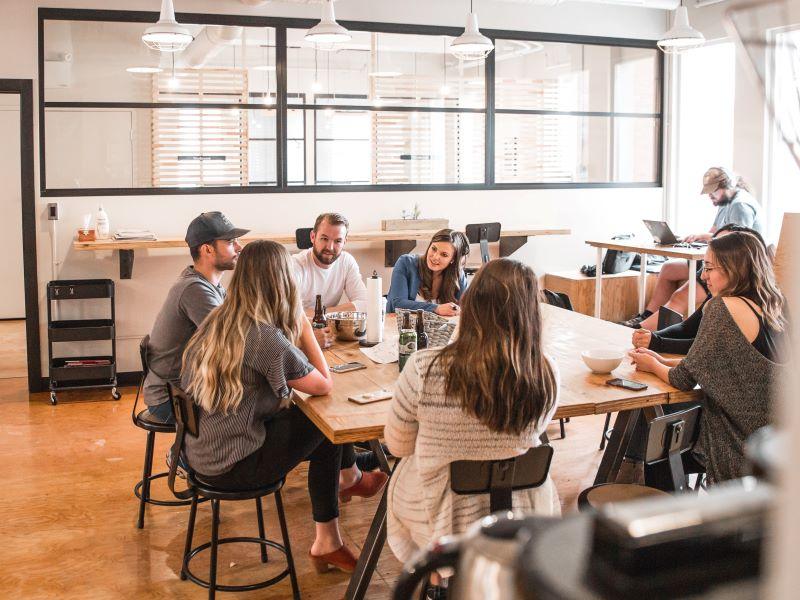As UCL planned its gradual emergence from the previous pandemic lockdowns, hundreds of student representatives were asked to help prioritise what mattered most to them as the university balanced health and safety with a return to campus. And the students provided a clear, overriding message: “We missed working together.”
Students want interactive experiences. Focus groups showed, unsurprisingly, that students wanted a “return to normal”, and the thing they had missed most was time spent learning and socialising together.
If pushed to prioritise within their responses, the students’ message was that they valued opportunities to connect and learn together, whether in smaller group seminars, labs, fieldwork or self-directed team learning sessions. Loud and clear came the message that learning and teaching must give greater prominence to the benefits of the less formal, more peer-engaged learning and study experiences.
Of course, similar conversations with students have been taking place at universities across the UK and around the world. We must work with our learners to navigate a safe path out of the pandemic, but we must also avoid a lazy drift from the near-term question of returning to campus into a long-term conclusion about the optimal way to deliver higher education.
We have learned a lot about what is possible – and often better – by delivering hybrid and online teaching, but students will rightly call out the fact that steps taken when the world was in lockdown cannot just become the new normal. They will rightly emphasise that they were willing to tolerate “best endeavours” during this extraordinary time. But this tolerance does not equal acceptance, let alone enthusiasm.
If we are going to persuade anyone that the models that have existed for decades can reasonably be replaced and augmented by online and remote delivery, then we must engage students and staff to explain the pros and cons – and to understand their perspectives.
There is much to be lauded in the innovation of learning and teaching in response to the pandemic and in the dedication of academic and professional staff to maintaining continuity for students. But none of the responses will be the exemplars from which future delivery is modelled. We need to make sure that new propositions are sold and explained to students in terms that they respect and value.
Students need to know that innovations in delivery will not compromise their direct contact with academic staff, will not leave them isolated from their peers and will empower them to learn flexibly and independently. This will require a new vision for education, one that is co-created with students. This must feel like a new deal, a new approach that understands and appreciates fully what students value most about their university experience and that adapts to students’ changing needs.
But how can that dialogue with students about their future education be authentic and meaningful?
First, universities cannot take a superior attitude to engagement: what we know to be an enhancement to learning and teaching might not feel that way to students. The aversion to losing something familiar will always overwhelm the promise of something new.
So, being justified pedagogically is just one part of the picture. We will need to justify new approaches on grounds of what possibilities are unleashed. For example: more pre-recorded lectures will create more time for informal Q&A, revision and discussion sessions with lecturers.
Second, institutions cannot see the challenge as one with a single institutional answer. There needs to be dialogue with different student groups, recognising the needs of their disciplines and across modes and levels of study, and reflecting the diversity of the student body. There may need to be a lot of support for such engagement given resources already stretched thin by the pandemic.
Centrally provided tools for engagement, and the mandate and parameters for dialogue, are essential for enabling local solutions. For example, the shift from a reliance on conventional face-to-face exams required by the pandemic will be sustained and embraced in some disciplines with a sense of relief and innovation, but in others both staff and students will feel a deeper unease about dropping the tried-and-trusted methods.
Recognising that the future of higher education is a big and knotty problem, one that won’t be solved easily, is an important premise. But the prize – for institutions, staff and students – is immense given the amounts of space, and therefore capital, committed to teaching spaces and technologies.
We need to think about the value of the spaces, and the value of the activities that take place within those spaces. When didactic teaching can be captured easily online and made available to students in modes and at times to suit them, then we have a major opportunity to reimagine how we allocate resources to best serve students’ needs.
We agree with the UPP Student Futures Commission, which said: “Universities will need to prioritise work from September with students and with parents, including through the media, to understand expectations around what is variously called ‘hybrid’ or ‘blended’ learning, and to explain clearly exactly what students will receive…Furthermore, universities would benefit from discussing openly the pedagogical benefits of their proposed models.”
But a short-term focus on the transition from pandemic delivery to the “new normal” misses the much bigger opportunity for a broad, deep and authentic engagement of students about what really matters to them and how that can best be delivered.
Derfel Owen is registrar and director of student and registry services at UCL.
Ant Bagshaw is partnerships director at Online Education Services (OES).
If you found this interesting and want advice and insight from academics and university staff delivered direct to your inbox each week, sign up for the Campus newsletter.




comment